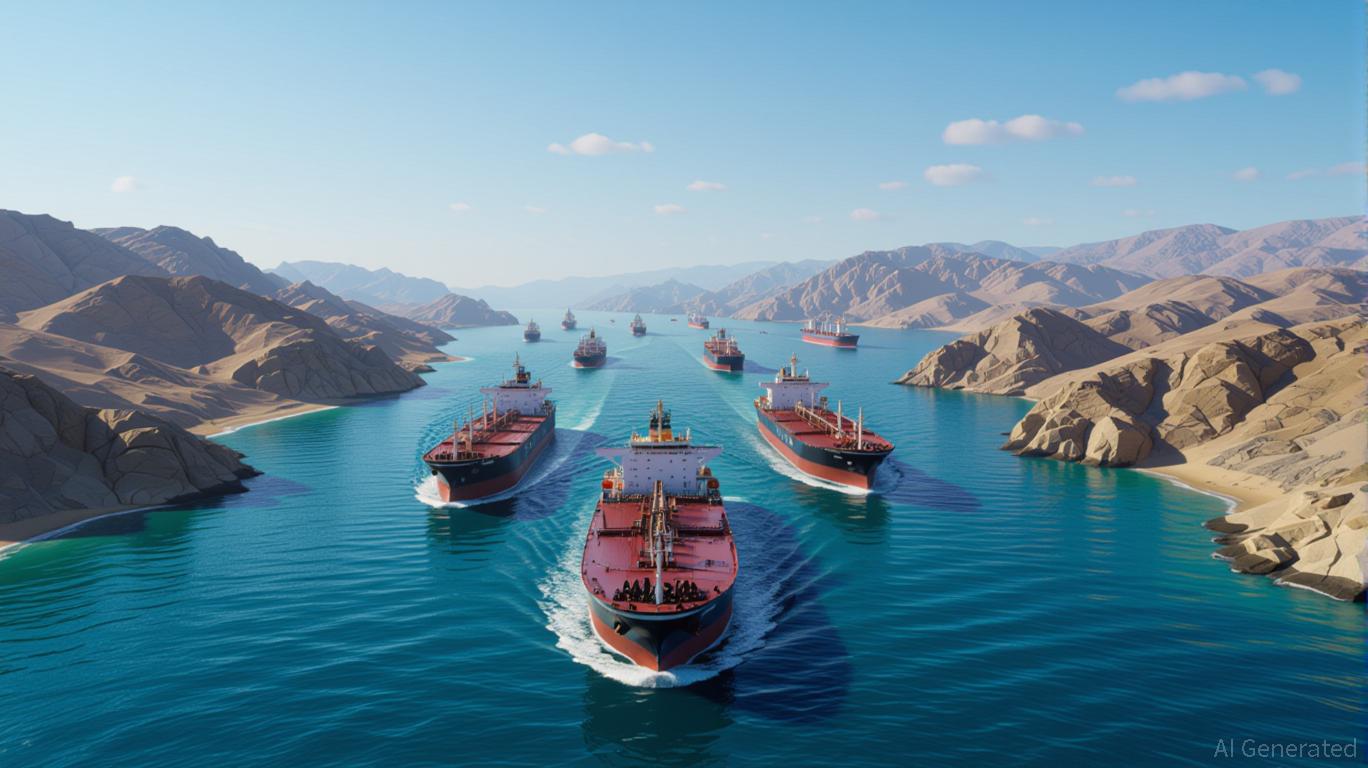
The reimposition of sanctions on Iran in 2025 represents a pivotal moment in global energy and geopolitical strategy, with cascading implications for commodity markets, trade flows, and investor portfolios. As the United States and its allies grapple with Iran’s nuclear advancements and regional destabilization, the interplay between sanctions, military actions, and market dynamics creates a volatile landscape. For investors, understanding how to allocate assets in such an environment is not just a matter of prudence—it is a necessity for survival in a world where geopolitical shocks can erase decades of economic gains overnight.
The Geopolitical and Economic Crossroads
Iran’s oil exports, currently at 3.22 million barrels per day (b/d), remain a cornerstone of its economy and a critical lever for its regional influence. U.S. sanctions, particularly those targeting oil and gas exports, have historically constrained Iran’s revenue but have also introduced a paradox: the U.S. seeks to weaken Iran’s regime while simultaneously avoiding a spike in global oil prices that would harm its own consumers. In 2025, this tension is exacerbated by Iran’s resilience. China, now Iran’s largest oil customer, has adapted to sanctions by circumventing U.S. financial systems, enabling Iran to maintain a baseline of exports despite secondary penalties.
The risk of reimposed sanctions—potentially triggered by the snapback mechanism of the 2015 JCPOA—adds another layer of complexity. If the International Atomic Energy Agency (IAEA) confirms Iran’s nuclear non-compliance, the U.S. and its allies could reimpose UN-level sanctions, including an arms embargo and uranium enrichment bans. Such measures would likely reduce Iranian oil production by 150,000–400,000 b/d in the short term, tightening global supplies and pushing oil prices toward $100 per barrel in a worst-case scenario.
Strategic Asset Allocation in a Fractured World
The challenge for investors is to balance the long-term potential of a multipolar energy order with the immediate risks of geopolitical escalation. Here are three core strategies to consider:
1. Energy Commodities with Hedging Mechanisms
Oil and gas remain critical assets, but their volatility demands sophisticated risk management. Investors should consider a dual approach:
– Long-term exposure to energy infrastructure and producers with geographic diversification (e.g., U.S. shale, Middle Eastern state-owned firms).
– Short-term hedging via futures contracts or options to mitigate price swings. For example, a portfolio could allocate 30% to energy equities and 10% to oil futures to offset potential supply shocks.
The Russia-Iran strategic alignment, formalized in January 2025, further complicates this calculus. By bypassing the U.S. dollar through barter trade and the MIR system, Russia and Iran are accelerating the de-dollarization of energy markets. This trend favors investors with exposure to non-U.S. dollar currencies and regional payment platforms.
2. Infrastructure and Geopolitical Insurance
Critical infrastructure projects, such as the International North-South Transport Corridor (INSTC), offer high-growth potential but require robust risk management. The INSTC, a 7,000-kilometer trade route linking Russia, Iran, and India, is designed to bypass Western-controlled shipping lanes. However, projects like the Bushehr 2 nuclear reactor—17% complete as of mid-2025—remain vulnerable to military strikes or sanctions.
Investors in infrastructure should prioritize:
– Geopolitical insurance (e.g., reinsurance policies covering war or political instability).
– Diversified revenue streams to mitigate single-point failures.
For example, a fund investing in INSTC-related logistics could pair its exposure with gold holdings or U.S. Treasuries to hedge against regional instability.
3. Defensive and Alternative Assets
Geopolitical volatility demands defensive allocations. Historical precedents, such as the 1979 Iranian Revolution (which tripled oil prices) and the 2011 Libya crisis, underscore the need for uncorrelated assets. Key allocations include:
– Gold: A safe-haven asset during energy crises.
– U.S. Treasuries: A hedge against inflation and currency devaluation.
– Digital currencies: Assets like Bitcoin, which may benefit from de-dollarization trends.
Navigating the Russia-Iran Nexus
The 2025 Treaty on Comprehensive Strategic Partnership between Russia and Iran has redefined energy and security dynamics. Russia’s Gazprom supplies 2 billion cubic meters of gas to Iran annually, while Rosatom leads nuclear projects like Bushehr 2. This alignment accelerates the shift away from U.S. dollar dominance but introduces new risks:
– Military escalation: A U.S. or Israeli strike on Bushehr could trigger a radiological crisis, with cascading effects on global markets.
– Sanctions fragility: Despite barter agreements, many Iran-Russia energy projects still rely on Western technology, making them vulnerable to U.S. sanctions.
Investors must weigh these risks against the long-term potential of a de-dollarized energy system. A 10–20% allocation to Russian-Iran energy ventures, paired with 15% in gold and 5% in digital assets, could offer a balanced approach.
Conclusion: Balancing Opportunity and Risk
The reimposition of sanctions on Iran in 2025 is not merely a geopolitical event—it is a seismic shift in global energy markets. For investors, the key lies in strategic diversification: leveraging energy commodities for long-term gains while hedging against short-term volatility through infrastructure, defensive assets, and alternative finance.
The Russia-Iran alignment and the fragility of the Strait of Hormuz highlight the need for agility. Portfolios must be dynamic, rebalancing monthly to reflect real-time geopolitical developments. As history has shown, those who prepare for the worst-case scenarios—while capitalizing on the opportunities of a multipolar world—will emerge unscathed in the face of uncertainty.
